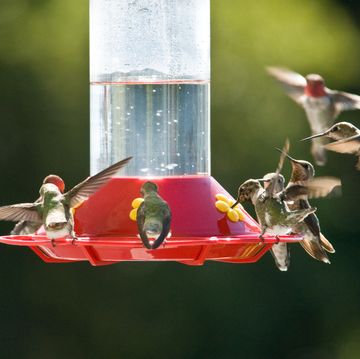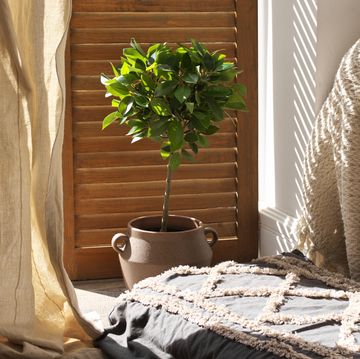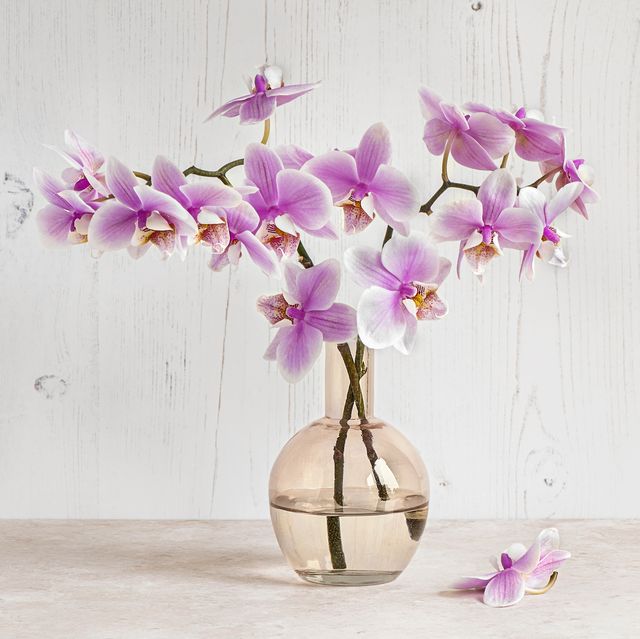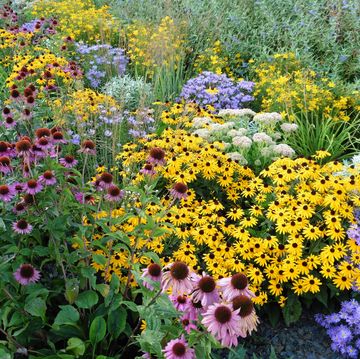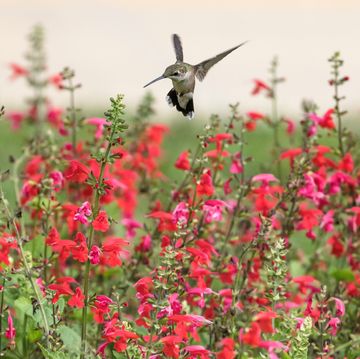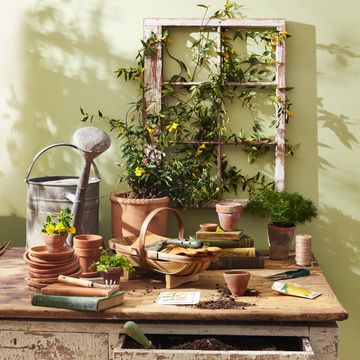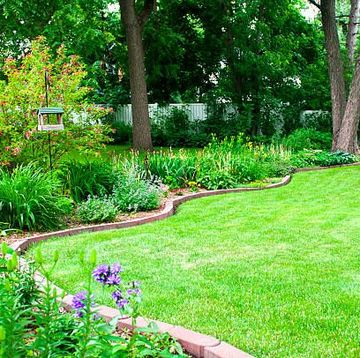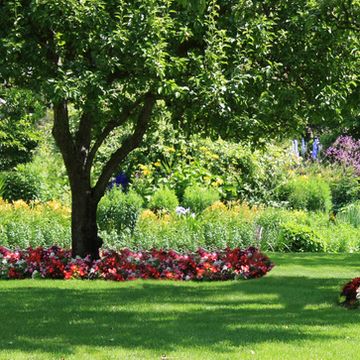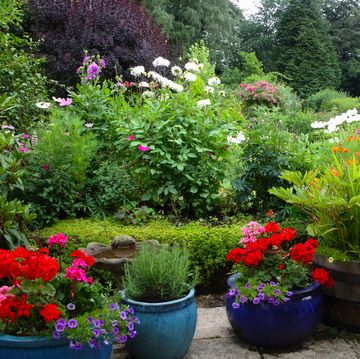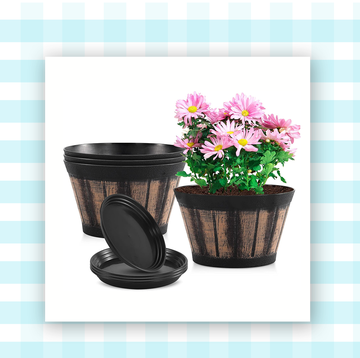1Cattleya Orchids
 Getty Images
Getty ImagesAs one of the most popular orchids, cattleya orchids, also known as "corsage orchids," come in a variety of different colors due to hybridization. Many have freckles or streaks of contrasting colors, and they thrive best in warm climates with medium bright light.
Care Guide
- Light: Abundant bright but indirect light, east-facing windows
- Water: About once a week, when the soil feels very dry
- Temperature: 70 to 80°F during the day, 60 to 65°F at night
2Brassia Orchids
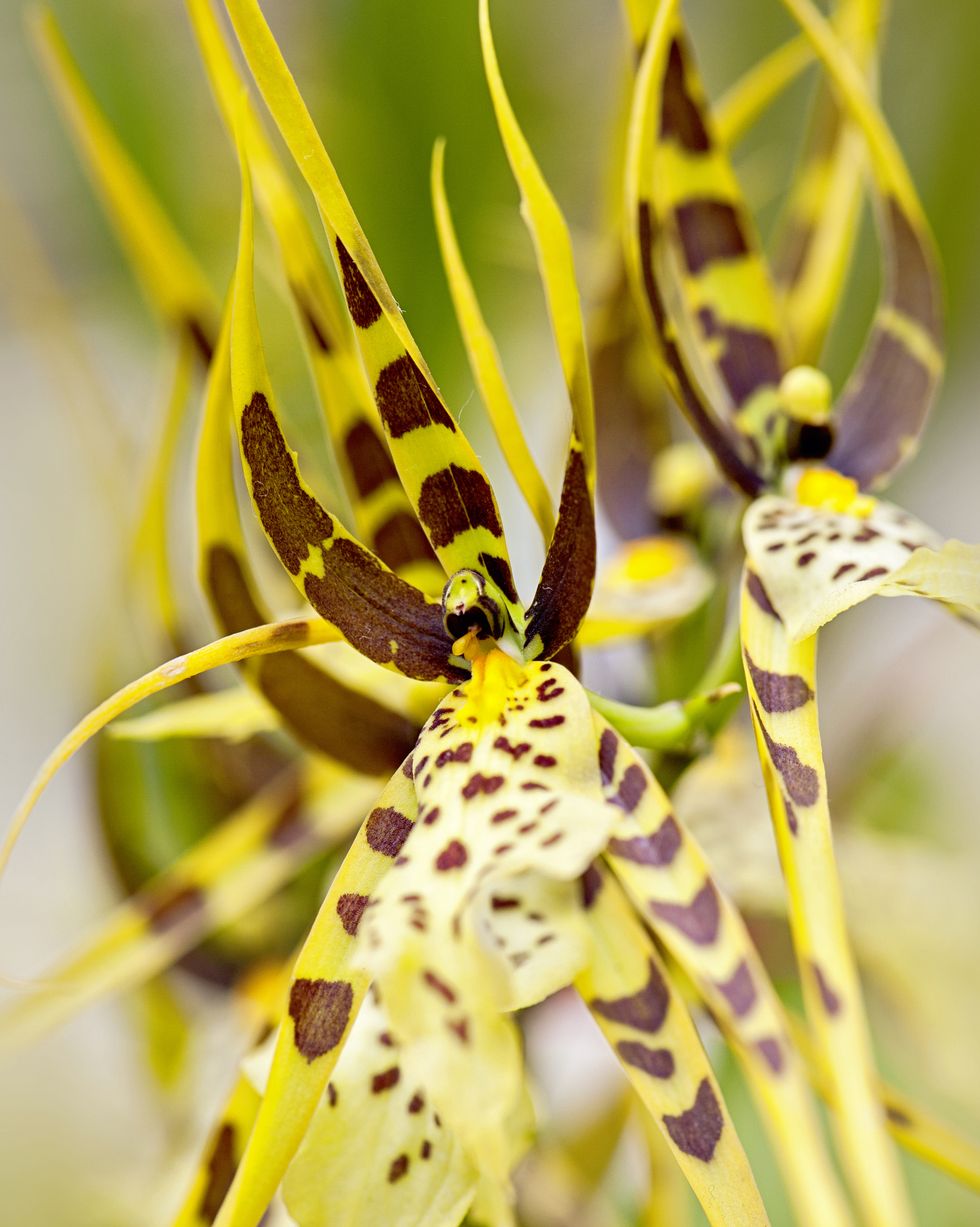 Getty Images
Getty ImagesBrassia orchids are distinguished by their spider-like sepals and interesting color patterns. These fragrant orchids boast numerous blooms with 8 to 12 flowers blooming from a single bulb. Brassia orchids love moisture and prefer bright, diffused light.
Care Guide
- Light: Bright, indirect
- Water: weekly, when the soil feels very dry
- Temperature: Can tolerate cool temps but keep above 50°F
3Dendrobium Orchids
 HAVET//Getty Images
HAVET//Getty ImagesThere are as many as 1,800 different species of dendrobium orchids. These orchids like to grow in small pots and often have tall, top-heavy blooms that require staking for support. Dendrobium orchids require cooler temperatures and less humidity than other orchids.
Care Guide
- Light: Bright, indirect morning light for 5-6 hours, east-facing windows
- Water: Every few days from spring to fall, and during flowering, then once a week after that.
- Temperature: 70 to 80°F during the day, 60 to 65°F at night
Advertisement - Continue Reading Below
4Vanda Orchids
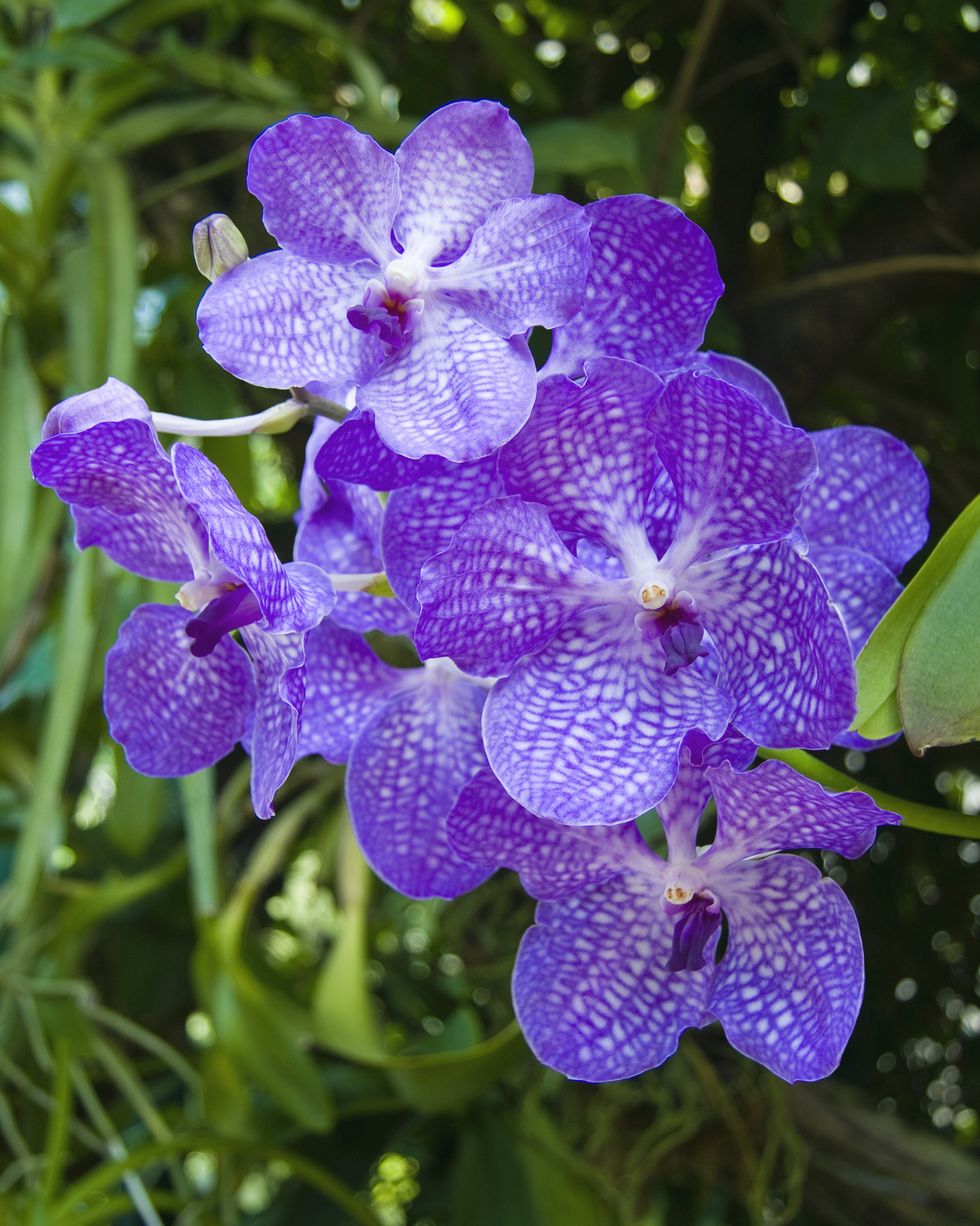 Ruth Brown//Getty Images
Ruth Brown//Getty ImagesWith about 80 species in this genus, vanda orchids have endless color varieties and are known for their fragrant and long-lasting flowers. These orchids are often seen growing in hanging baskets with their roots exposed to plenty of air. Although they bloom 2 to 3 times a year, vanda orchids can be fickle to grow as they demand lots of light and high humidity.
Care Guide
- Light: Bright or dappled light, south-facing windows
- Water: Once every 5-7 days, as the soil begins to dry
- Temperature: 70 to 80°F during the day, 60 to 65°F at night
5Phalaenopsis Orchids
 Getty Images
Getty ImagesOne of the most common types of orchids, phalaenopsis orchids, also known as "moth orchids," are ideal for beginners. They are relatively easy to grow inside and stay in bloom for most of the year. Phalaenopsis orchids prefer diffused lighting and moderate humidity, so try placing yours in the kitchen or bathroom.
Care Guide
- Light: Shaded, indirect light, east or west-facing windows
- Water: When soil becomes slightly damp, up to 2 times per week during dry periods
- Temperature: 70 to 80°F during the day, 60 to 65°F at night
6Maxillaria Orchids
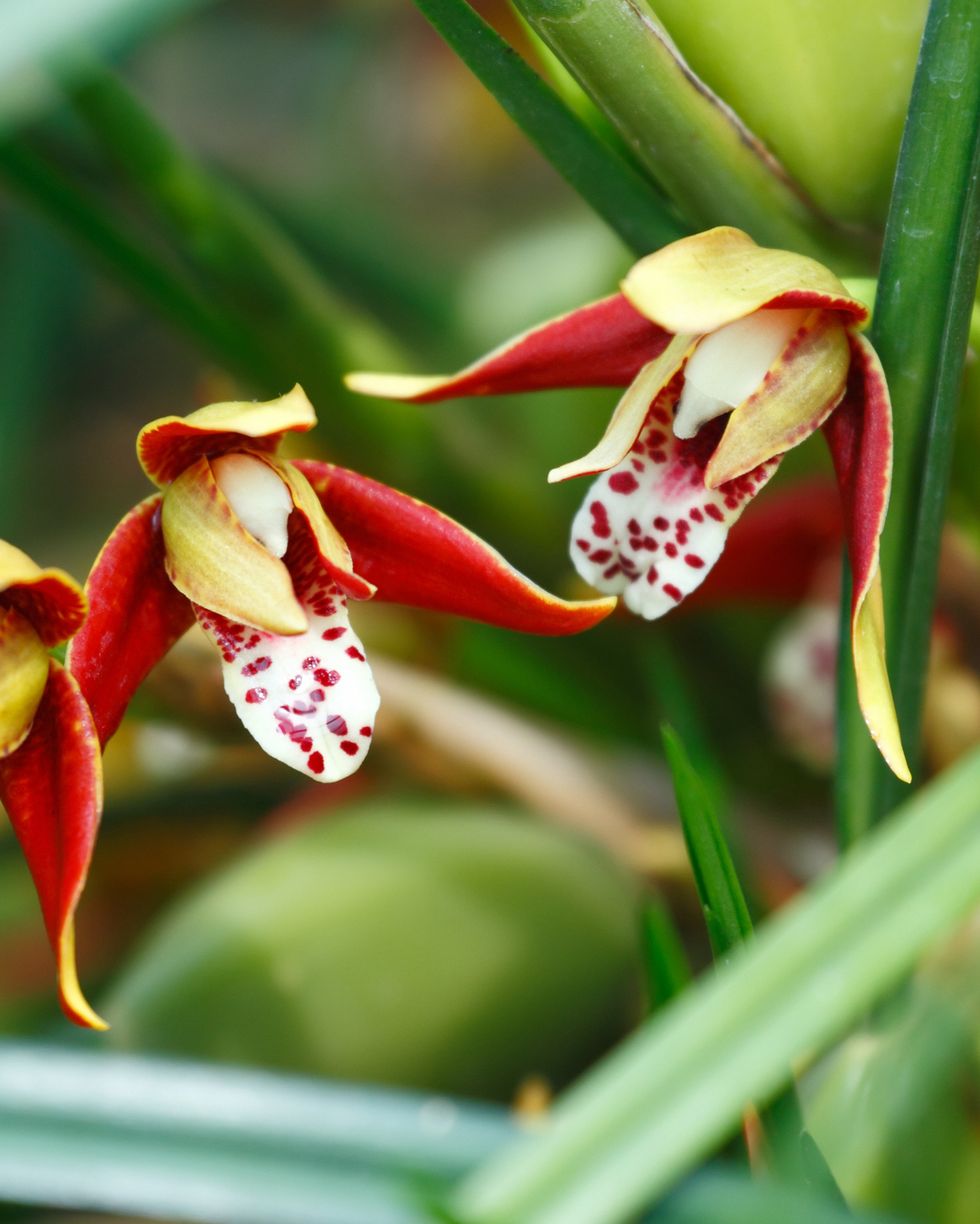 Getty Images
Getty ImagesOften found in tropical areas, maxillaria orchids like bright light and can take a lot of water. There are more than 300 species of maxillaria orchids and most are known for their fragrance of coconut and vanilla. Maxillaria orchids bloom in early spring.
Care Guide
- Light: Abundant bright but indirect light, east-facing windows
- Water: When soil feels dry to the bottom of the pot, about once a week at most
- Temperature: 70 to 80°F during the day, 60 to 65°F at night
Advertisement - Continue Reading Below
7Miltonia Orchids
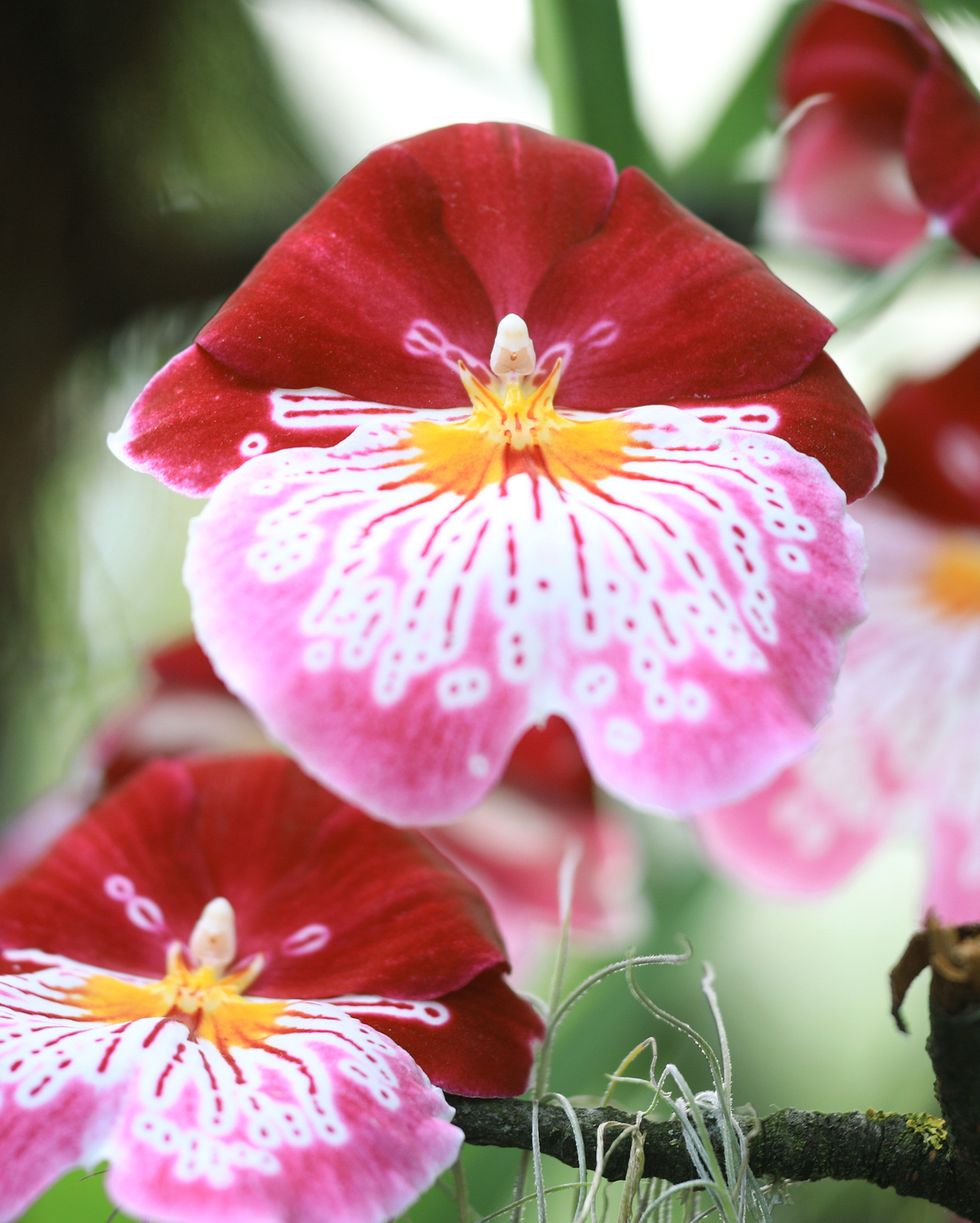 Getty Images
Getty ImagesMiltonia orchids are often referred to as "pansy orchids" because of their similar appearance to garden pansies. Unlike garden pansies who prefer cooler temperatures, miltonia orchids require bright indirect light and moderate temperatures, blooming from late spring to summer.
Care Guide
- Light: Abundant bright, partial sun
- Water: Let soil almost dry all the way out between waterings
- Temperature: 75 to 85°F during the day, 60 to 65°F at night
8Zygopetalum Orchids
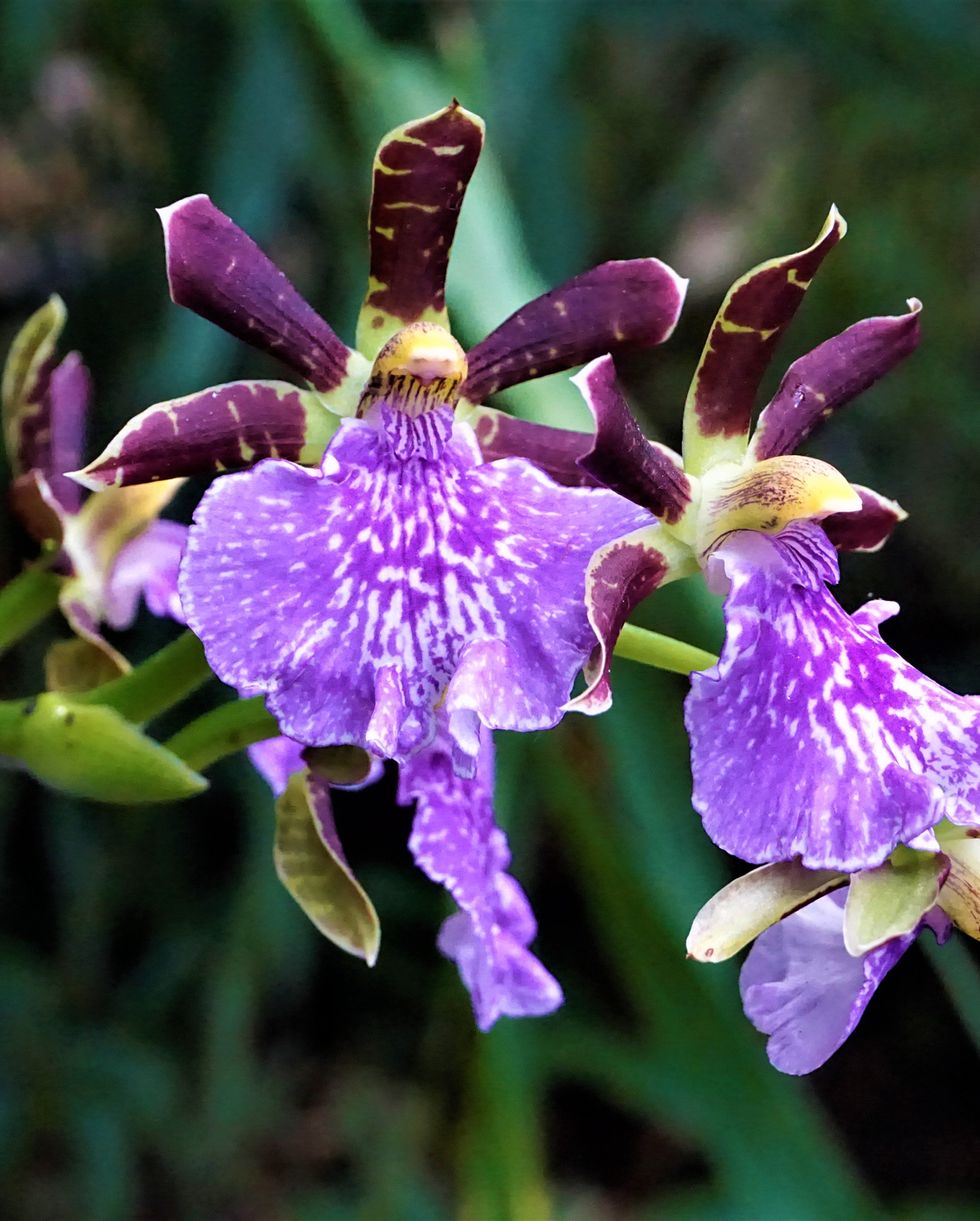 Getty Images
Getty ImagesZygopetalum orchids are another example of cool-climate orchids, blooming from fall to spring. These fragrant flowers boast bright purple petals with veiny streaks throughout. They make up a relatively small genus with only 15 species.
Care Guide
- Light: Shaded, indirect light, east or west-facing windows
- Water: Keep fairly moist, watering up to 2 to 3 times per week during warm, dry weather
- Temperature: 70 to 75°F during the day, around 60°F at night
9Brassavola Orchids
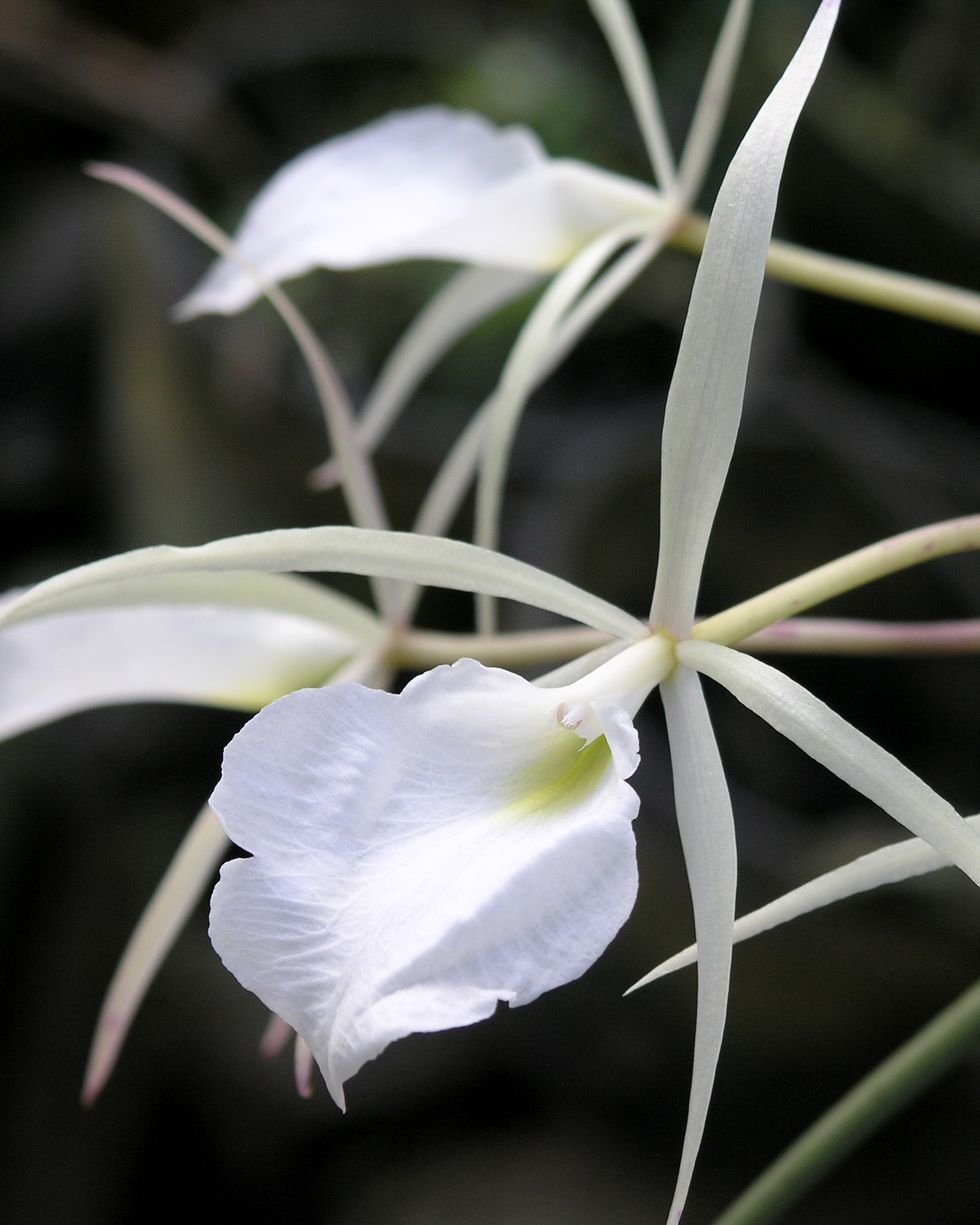 Getty Images
Getty ImagesNicknamed "lady of the night orchids," brassavola orchids have white and green flowers with narrow petals that release a fragrant scent in the evening. These orchids can be grown in a pot or on an orchid mount and flower in early winter.
Care Guide
- Light: Tolerates medium to high indirect light
- Water: Keep well watered, but allow plenty of drainage. Brassavola does best in high humidity (40 to 7o%) environments
- Temperature: 70 to 75°F during the day, 60 to 65°F at night
Advertisement - Continue Reading Below
10Cymbidium Orchids
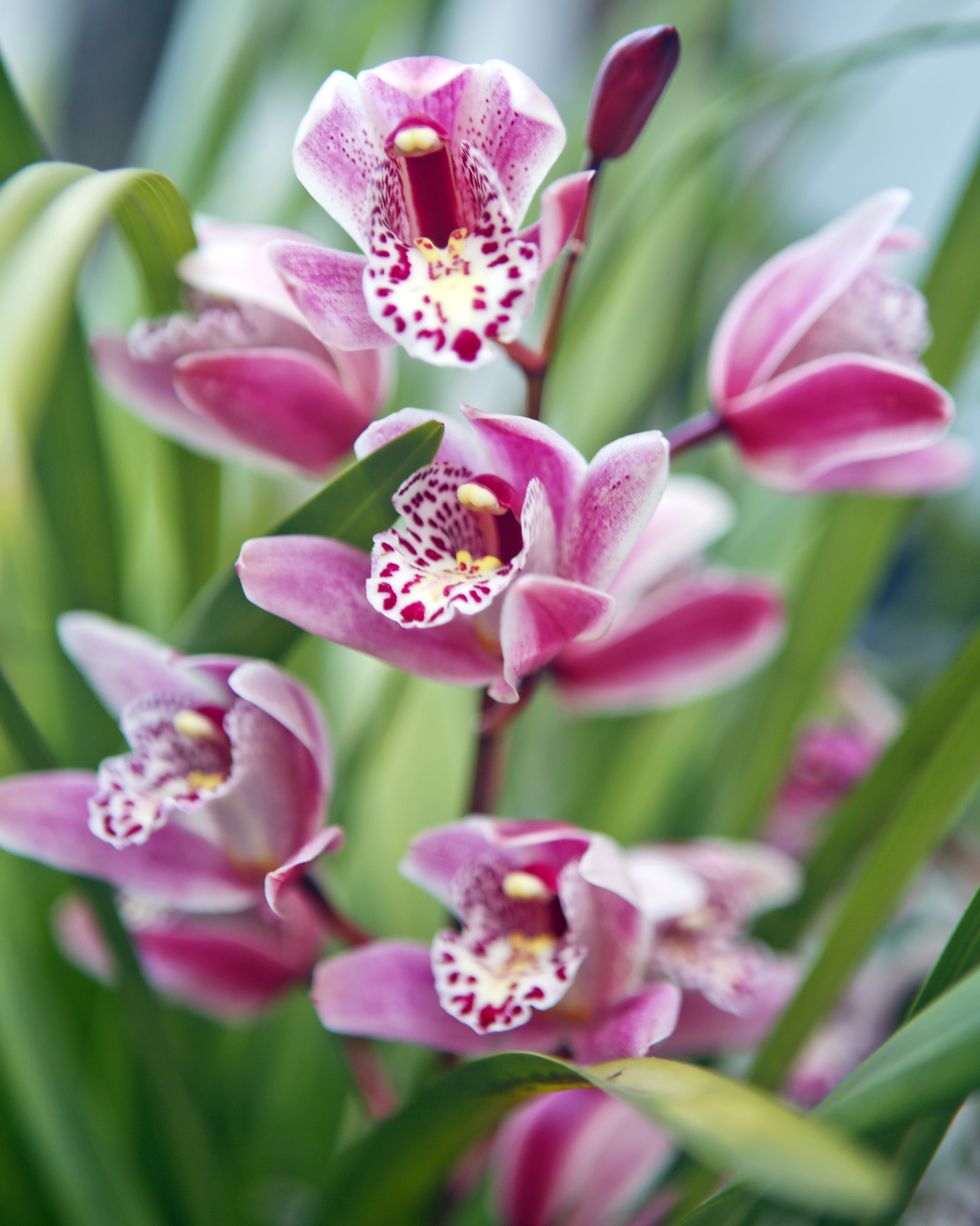 Getty Images
Getty ImagesCommonly known as "boat orchids," cymbidium orchids have smaller flowers compared to other orchid varieties, but can produce up to 30 blooms per spike. They can be grown in a garden or as an indoor houseplant and prefer warmer temperatures during the day and cooler temperatures at night.
Care Guide
- Light: Bright but diffuse light, south, east, or west-facing windows
- Water: Keep moist at all times. In the spring, water frequently and heavily
- Temperature: Cymbidium do best outdoors, where fall temperatures drop below 60°F. Plants are not frost tolerant and will need to come indoors if temperatures reach 35°F or colder
11Encyclia Orchids
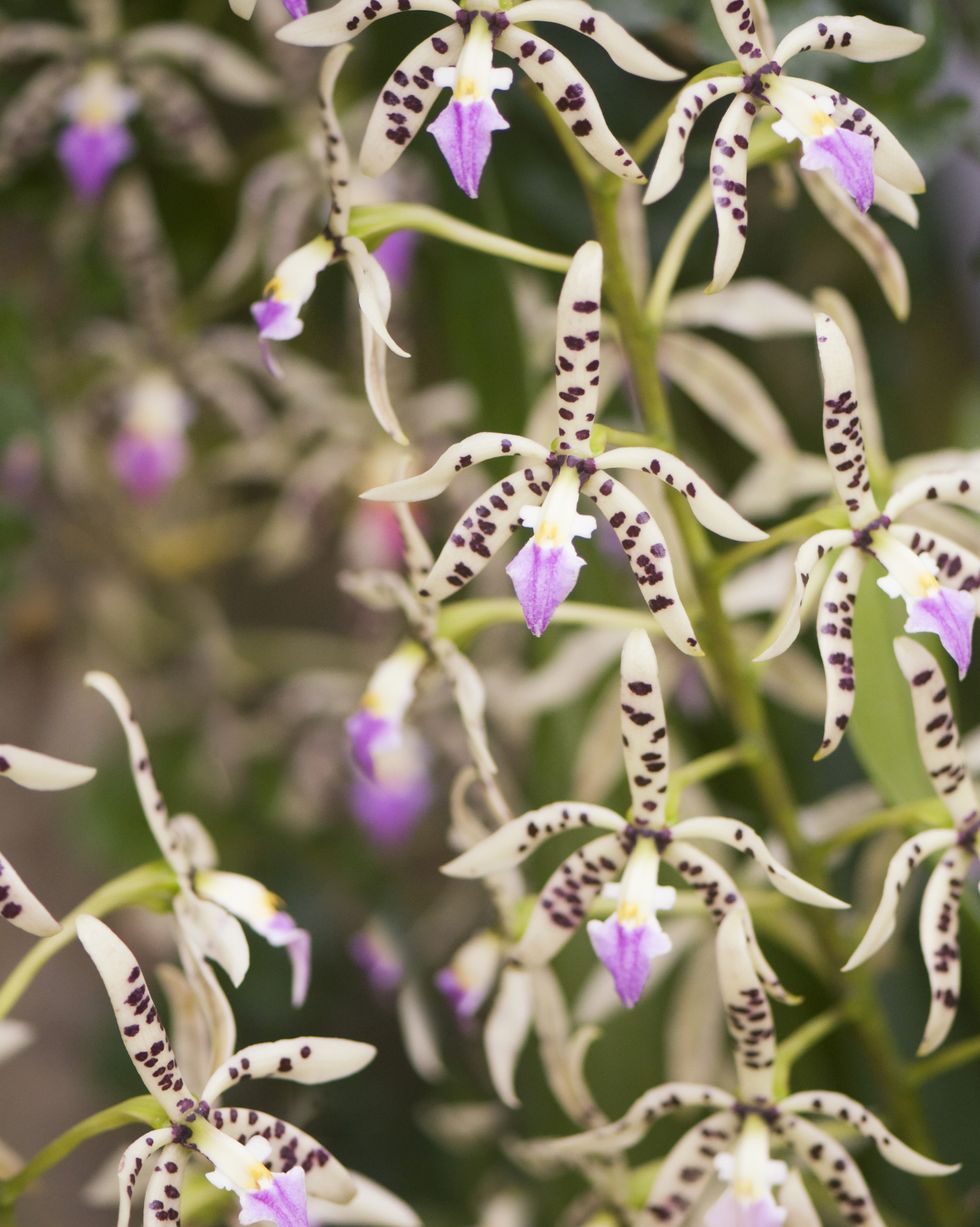 Getty Images
Getty ImagesAlso known as "cockleshell orchids," encyclia orchids are recognized for their octopus-like shape and ability to bloom for several consecutive months. These orchids are not fragrant and bloom best when planted on an orchid mount that mimics how they naturally grow in the wild.
Care Guide
- Light: Abundant indirect light
- Water: Allow roots to dry out between watering, 1 to 2 times per week
- Temperature: Depending on species, cool to warm. Keep above 60°F for most plants
12Oncidium Orchids
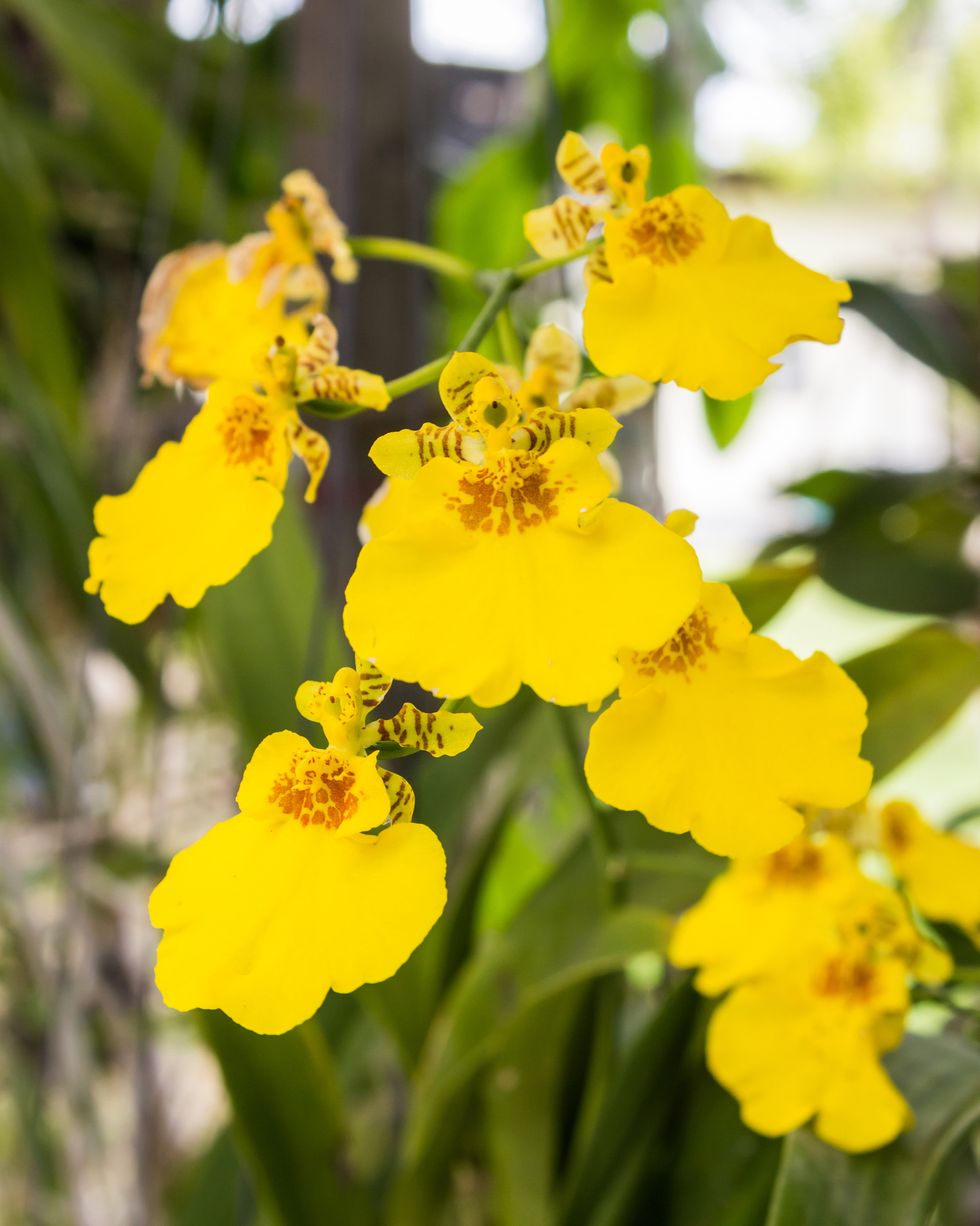 Getty Images
Getty ImagesOncidium orchids are commonly referred to as "dancing lady orchids" because of the skirt-like frill of their petals. There are more than 300 species in this genus, including the popular "sharry baby" variety that is said to smell like chocolate. Oncidium orchids need consistent moisture and humidity, prefer a cooler environment, and usually bloom in the fall.
Care Guide
- Light: Semi-shaded, east or west-facing windows
- Water: Keep moist, watering up to 2 to 3 times per week in dry, warm weather
- Temperature: 70 to 85°F during the day, 60 to 65°F at night
Advertisement - Continue Reading Below
13Epidendrum Orchids
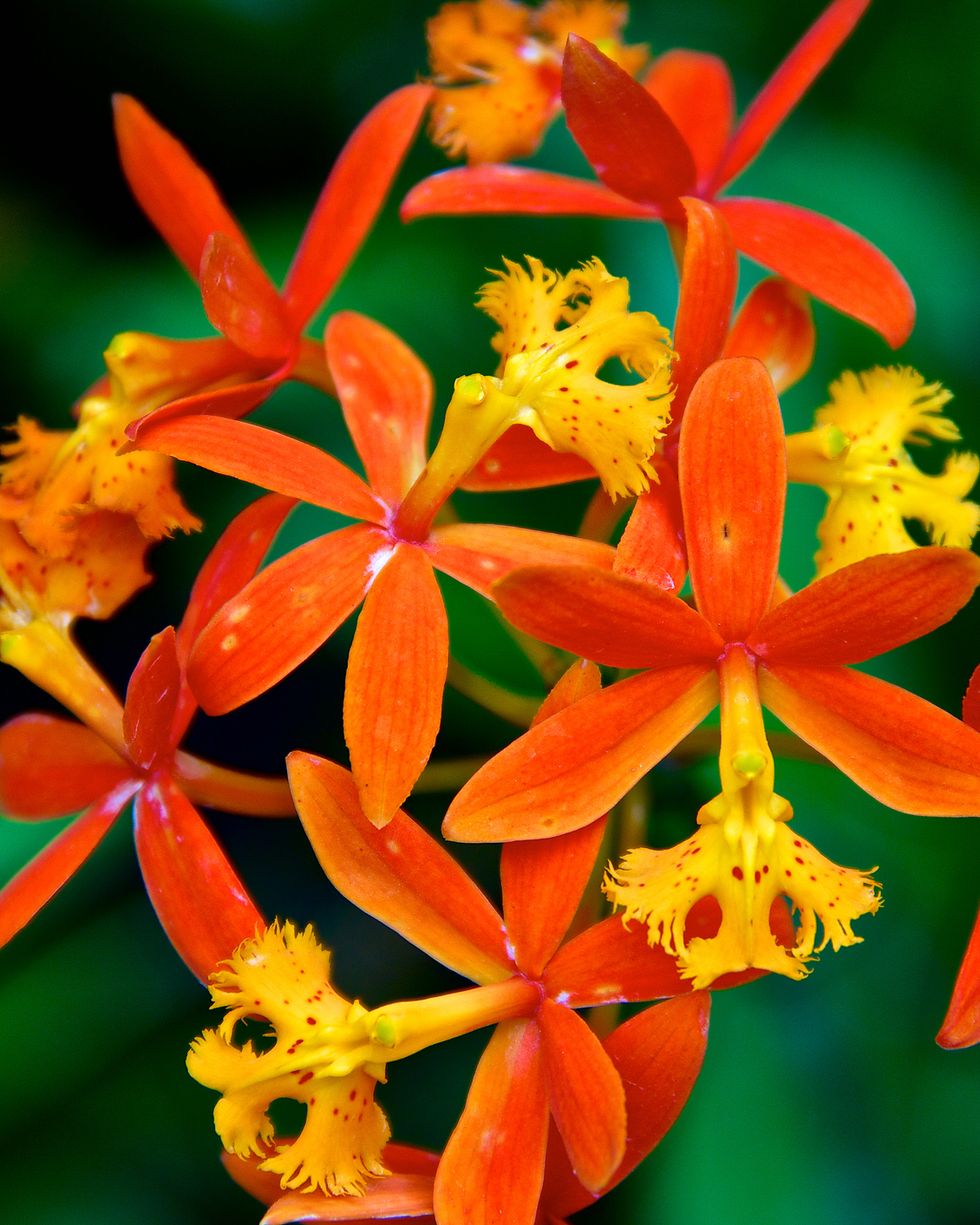 Getty Images
Getty ImagesWith more than 1,000 different species and hybrids, epidendrum orchids are one of the most common types of orchids. Their flowers are more petite compared to other orchids and they usually bloom in bunches. Epidendrum orchids need very bright light and are best grown outdoors in the summer or with supplemental artificial lighting inside.
Care Guide
- Light: Abundant diffuse light
- Water: Allow roots to dry completely between watering. Water more often during hot weather.
- Temperature: Can tolerate most temperatures above 50°F
14Odontoglossum Orchids
 Getty Images
Getty ImagesOdontoglossum orchids are cool-climate orchids known for their colorful and freckled petals. These flowers need moderate light and frequent watering (about 2 to 3 times per week). Odontoglossum orchids are highly recommended for growing in greenhouses.
Care Guide
- Light: Bright shade, no direct light
- Water: Keep well watered in a high-humidity environment
- Temperature: 70 to 75°F during the day, 50 to 55°F at night
15Psychopsis Orchids
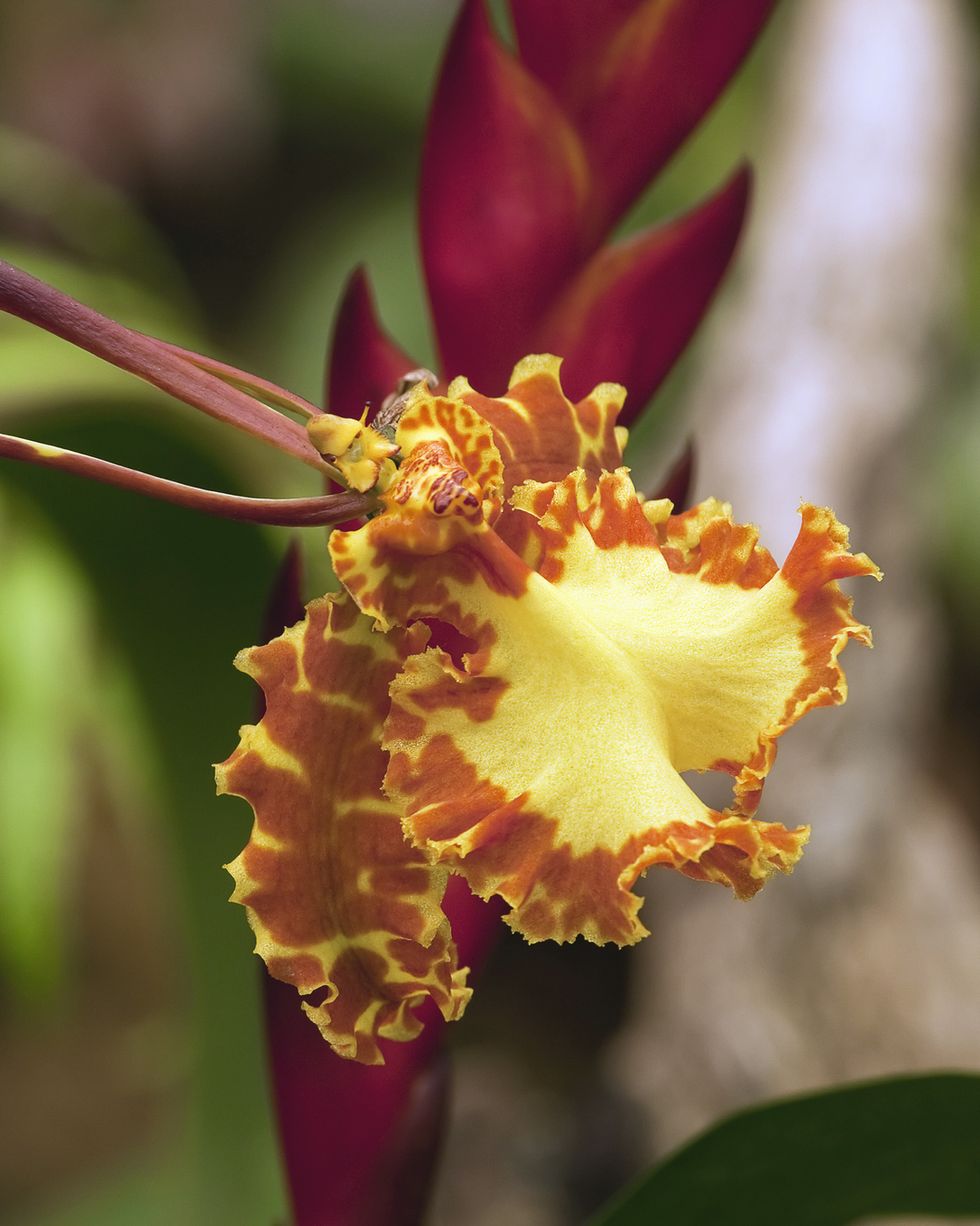 Getty Images
Getty ImagesPsychopsis orchids are also known as "butterfly orchids" because their speckled petals look like butterflies dancing in the breeze. They are relatively easy to grow as they have a good tolerance for a wide range of temperature and light conditions and can bloom for many months.
Care Guide
- Light: Low to moderate light. East or west-facing windows
- Water: Fully moisten when watering, allow to nearly dry out between. Humidity as much as 85%
- Temperature: Up to 90°F during the day, to 60°F at night
Advertisement - Continue Reading Below
16Paphiopedilum Orchids
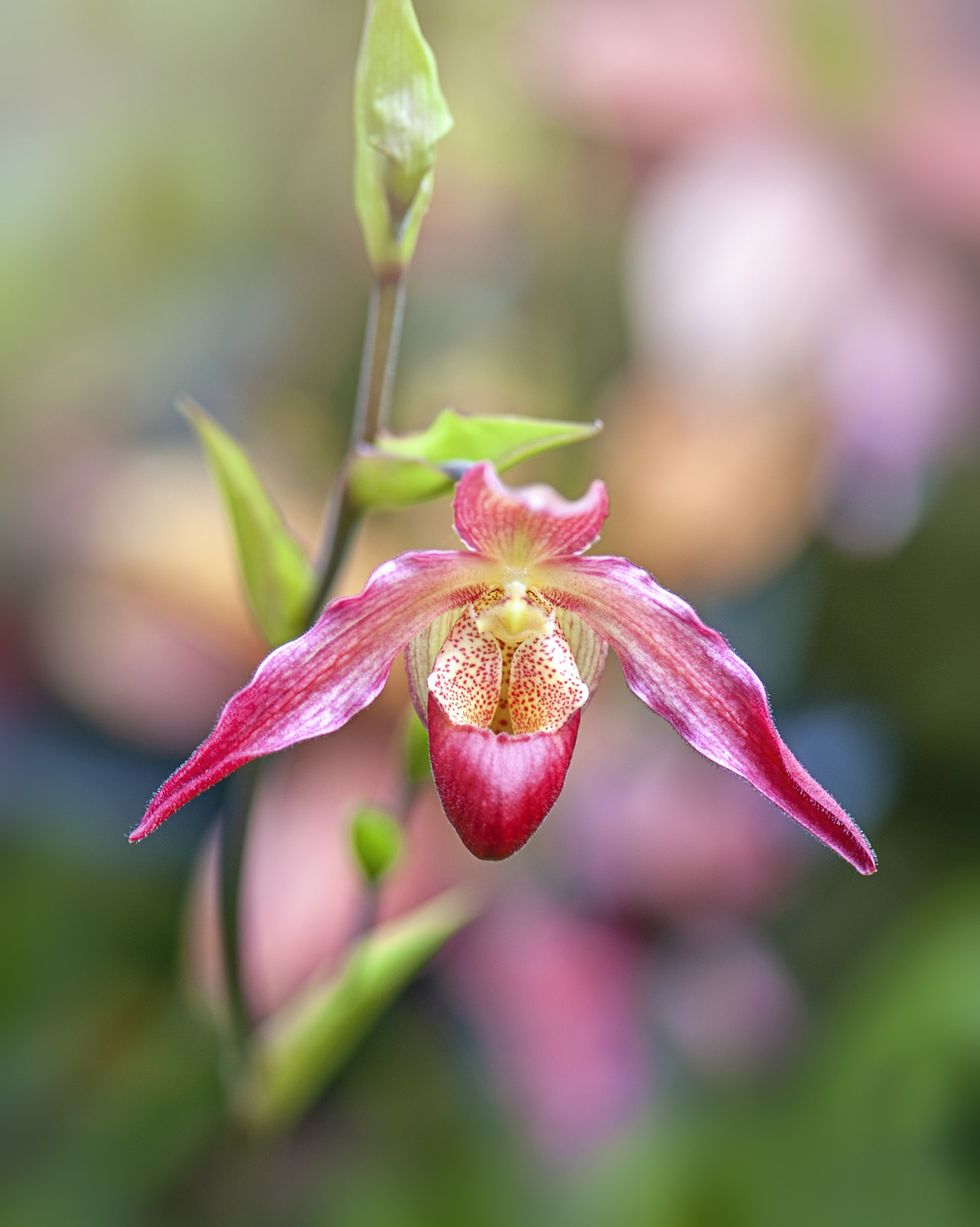 Getty Images
Getty ImagesThe fused petals of paphiopedilum orchids create a pouch that looks a lot like a ballet flat, which is why this orchid is often referred to as the "lady's slipper orchid." This orchid is an easy-to-grow houseplant and is great for beginners, with petals in a variety of colors with speckled and striped patterns.
Care Guide
- Light: Well shaded, indirect light, east or west-facing windows
- Water: Keep moist, watering up to 2 times per week in dry, warmer months
- Temperature: 70 to 80°F during the day, 55 to 65°F at night
17Phaius Orchids
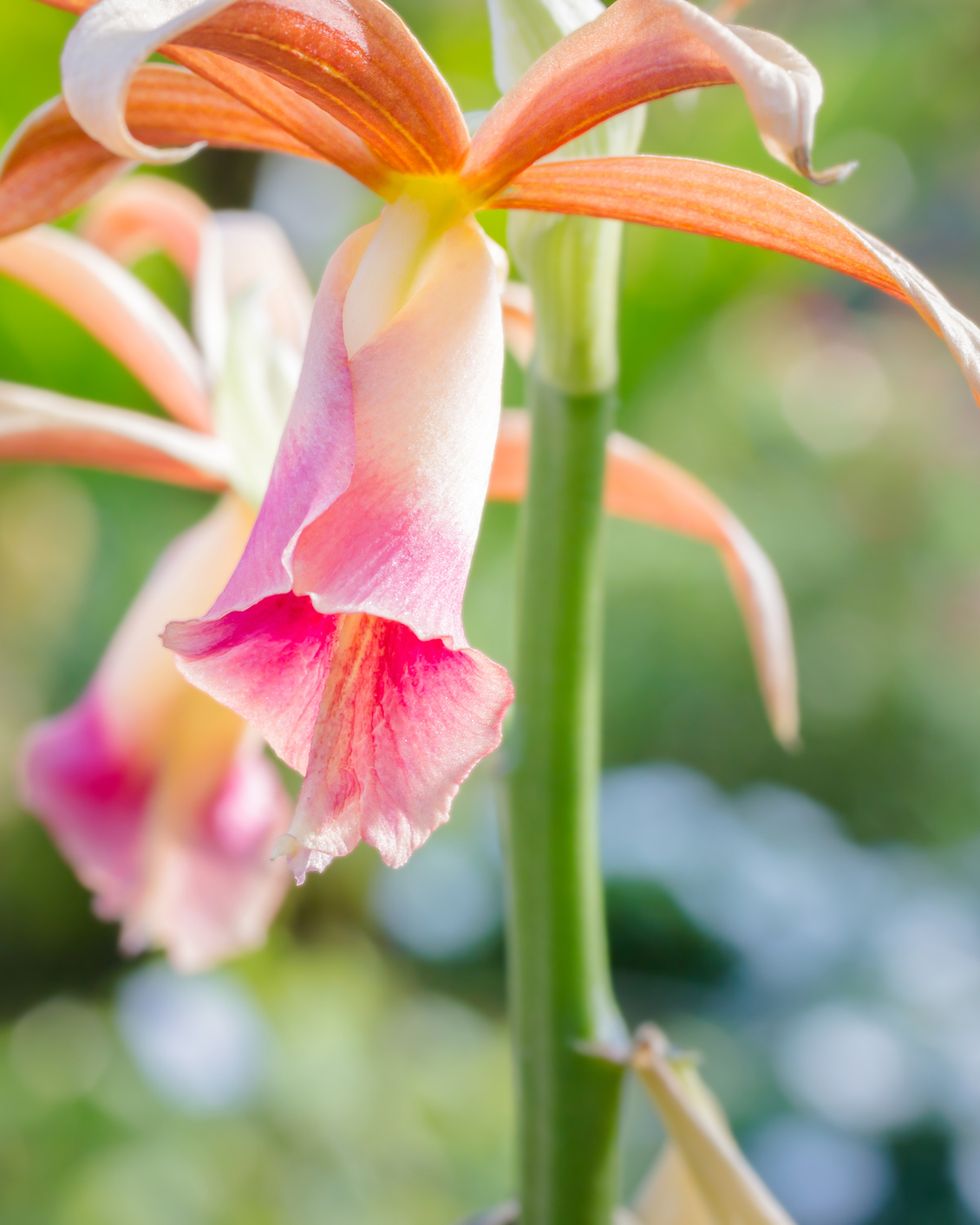 Getty Images
Getty ImagesPhaius orchids, also known as "nun's cap orchids," can grow up to 4 feet tall. They have large leaves at their base and flowers that come in colors like white, pink, red, and purple. Phaius orchids can grow outside year round (without freezing) and typically bloom in the winter.
Care Guide
- Light: Moderate to bright filtered light, can tolerate some low light situations
- Water: Keep moist, watering up to 2 times per week in dry, warmer months
- Temperature: Above 60°F
18Phragmipedium Orchids
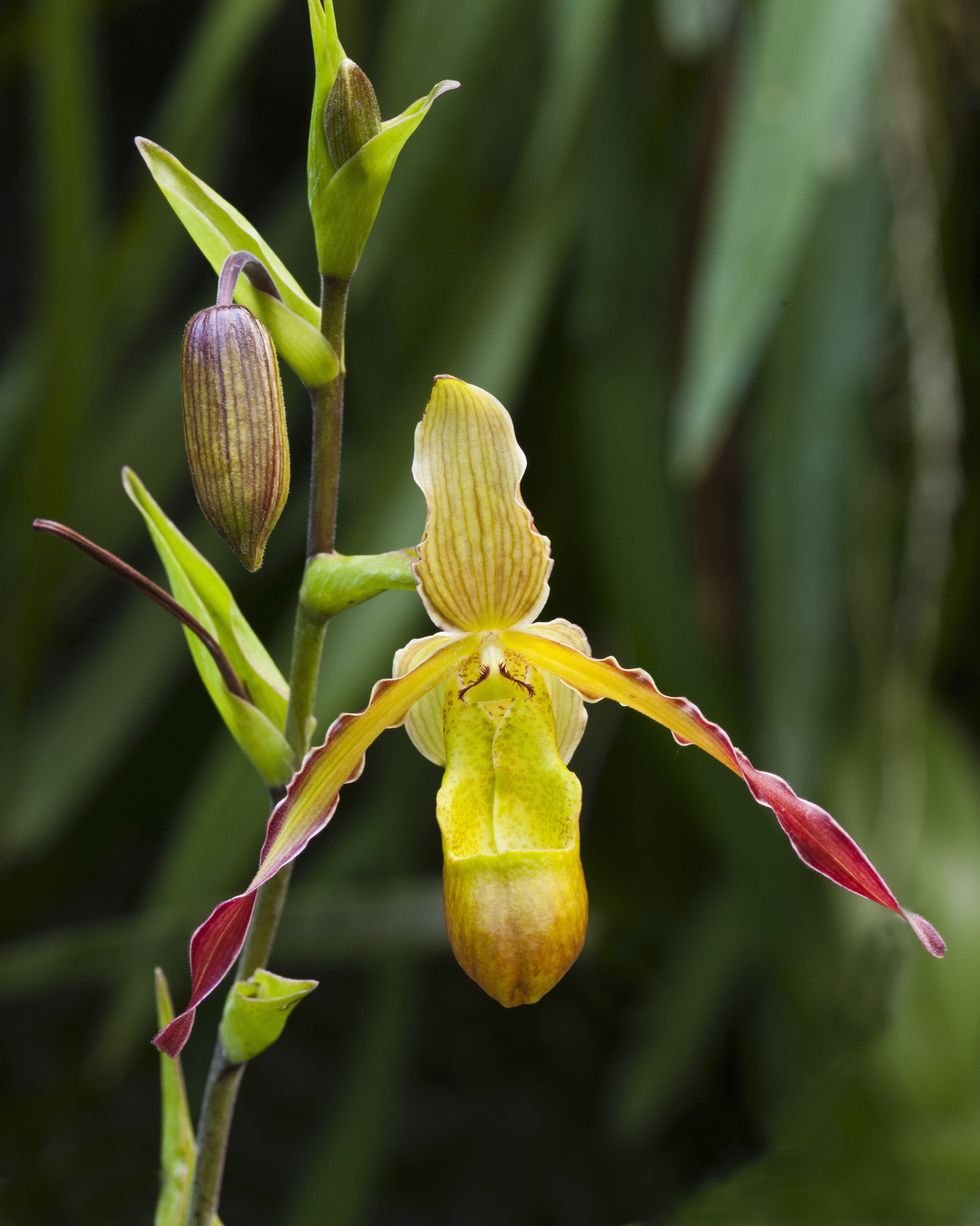 Getty Images
Getty ImagesUnlike a vast majority of other types of orchids, phragmipedium orchids thrive in wet conditions and prefer to have "wet feet." This comes as no surprise since these orchids are commonly found on the sides of streams and rivers. Phragmipedium orchids look much like lady's slipper orchids with petals that form a pouch.
Care Guide
- Light: semi-shade to bright, indirect light, east-facing windows
- Water: Keep moist, watering up to 2 to 3 times per week, use clean water
- Temperature: 70 to 80°F during the day, 55 to 65°F at night
Advertisement - Continue Reading Below
19Catasetum Orchids
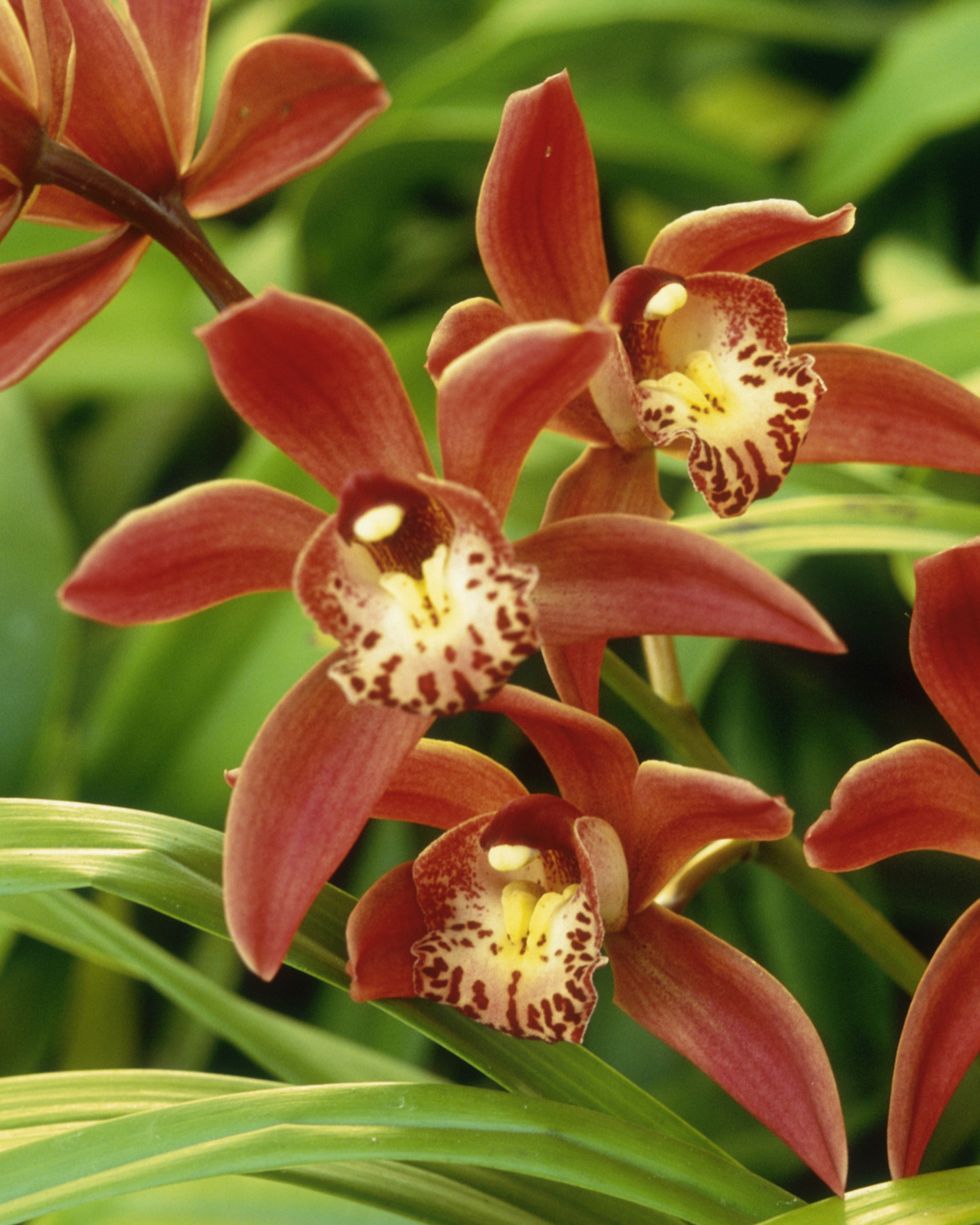 Getty Images
Getty ImagesAs one of the most unique orchids, catasetum orchids have unusually waxy flowers and produce both male and female flower buds. If the plant is touched or bumped, the male flowers will actually shoot pollen into the air.
Care Guide
- Light: Bright shade to full sun, east-facing windows
- Water: 2 to 3 times per week while bulbs are forming. Reduce watering after plants flower, then stop altogether when leaves fall off and plant goes dormant.
- Temperature: 70 to 80°F during the day, 60 to 65°F at night
20Lycaste Orchids
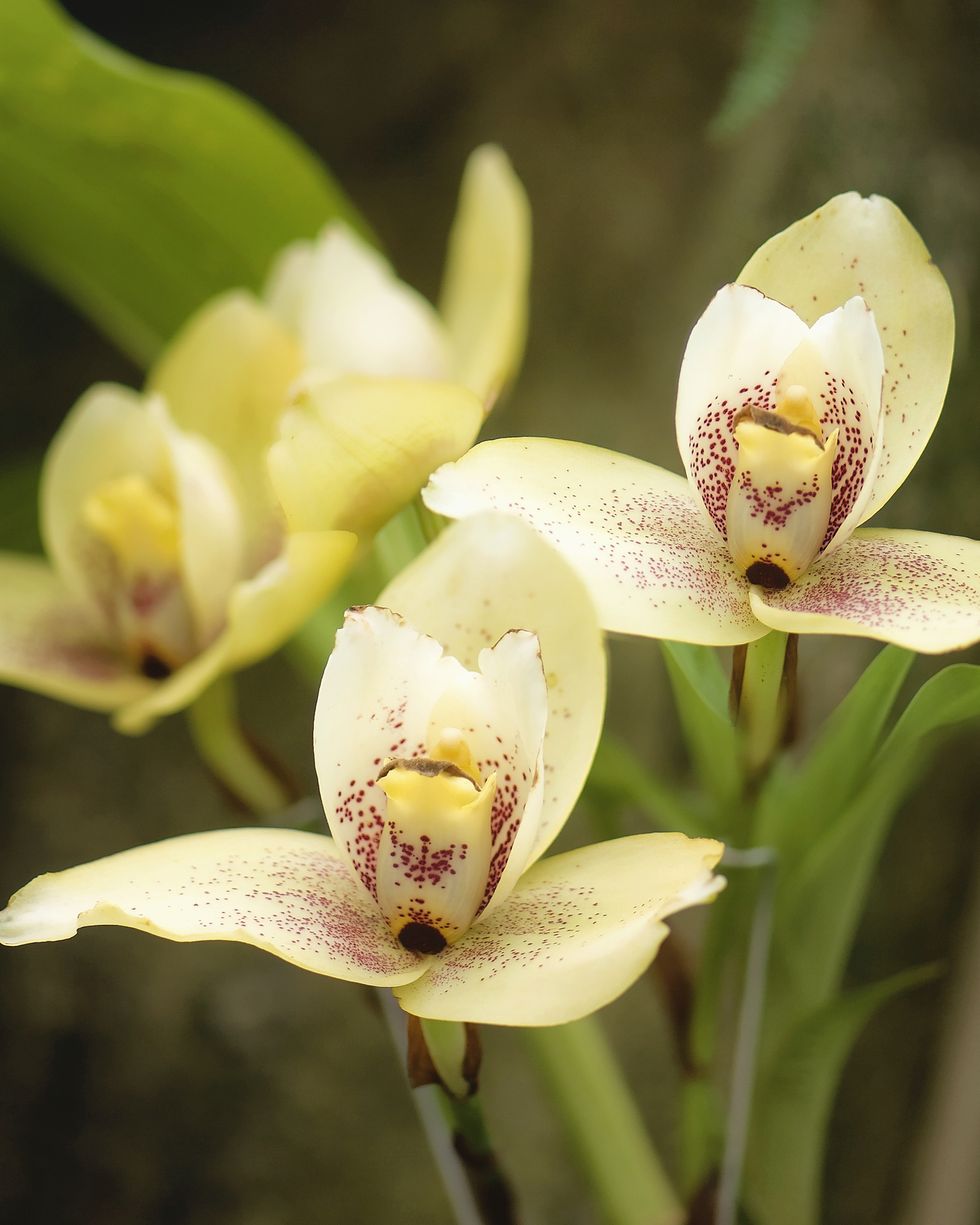 Getty Images
Getty ImagesMany species of lycaste orchids are fragrant with scents like lemon and cinnamon. These orchids shed their leaves during dormancy revealing spikes that can be quite sharp. Lycaste orchids come in colors like white, yellow, and red, and bloom in late winter to early spring.
Care Guide
- Light: Abundant, indirect light, east-facing windows
- Water: Keep soil moist at all times during growing, reduce slightly in the winter
- Temperature: 65 to 75°F during the day, 50 to 60°F at night

Carmen Collins is the style editor at Country Living, where she covers home decorating ideas and produces e-commerce shopping guides.
Advertisement - Continue Reading Below
Advertisement - Continue Reading Below
Advertisement - Continue Reading Below
